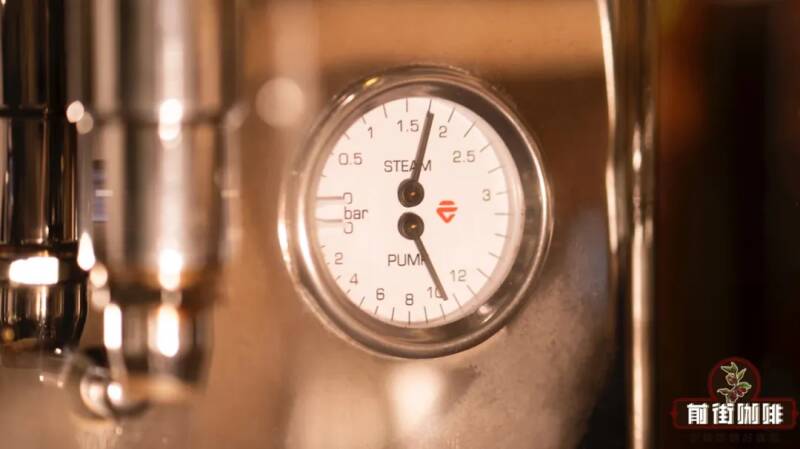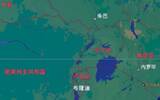How to find out by observation whether the extraction status of espresso coffee is correct? What should I pay attention to before extracting in an espresso machine?
Adjusting espresso is a skill that every barista needs to learn. Because once unskilled, when it rains, not to mention how painful it is.

Although espresso needs to be tasted to determine whether there is something wrong with the taste, very often, we can find out some problems directly through observation, and the emergence of these problems will affect the concentrated taste of the final extraction. so we just need to learn how to observe, then we will be able to reduce the amount of bad coffee you drink! So let's take a look at what problems can be directly observed by us.
Before extraction, the situation that is easy to be ignored before extraction and concentration, we need to check whether the water temperature and pressure of the coffee machine are in a normal state. Many friends will start to adjust the extraction every morning before the coffee machine is full of pressure. In this way, it is easy to lack the extraction rate of coffee due to insufficient temperature or pressure, thus showing a sharp and sour taste.

During the extraction, the release status of the coffee liquid during the extraction and concentration, we can judge whether a cup of espresso will have a problem by observing the state of the coffee and the state of the liquid column. Under normal circumstances, the espresso extracted from the former street, for example, will be pressed out of the first drop of coffee in 5-6 seconds from pressing the extraction button. At this time, the coffee liquid appears dark brown, looks very sticky, and the flow rate is slow! Starting from about 12 seconds, the flow rate of the coffee liquid will begin to accelerate and reach a steady state, when the color of the concentrate is brown and looks like a creamy texture. Starting from about 20 seconds, the color of the extracted coffee liquid begins to fade. At this time, the color of the coffee liquid is golden, and the flow rate is stable, but the texture looks less sticky, and with the passage of time, the color will be lighter and lighter. When the coffee liquid has been light to light yellow, it means that the substance is about to be extracted. Then we need to stop extraction at this time to avoid the release of negative substances.
However, if the concentration of the liquid is not as progressive as above, but there are the following problems, then we need to adjust some parameters, or some actions. First, the time delay of the liquid: if there is no pre-immersion, the time point of the espresso is after 10 seconds. Then it is due to the grinding is too fine, resulting in pressed powder resistance is too high so that hot water can not seep out at a normal time. This situation will greatly deviate from our expected extraction time, resulting in a deviation in the taste. So in the event of a situation like this, we can directly stop the extraction, roughen the grinding and then re-debug it. (the flow rate is too fast, fine grinding or powder addition can be done) second, the flow rate is unstable: or, like the flow rate is unstable, suddenly fast and slow, there is a jet, and sometimes even fall in the posture of a "waterspout". Then it is very likely that some details of the powder distribution are not in place, leading to the channel effect of the extraction. In cases like this, we need to pay attention to the details of powder distribution, such as uniform distribution of powder, uniform force when pressing powder, and so on.
After extraction, the state of espresso when we finish the extraction, there are also objects that can be observed! That's the fat of espresso. It is often mentioned in the front street that a cup of high-quality concentrated oil is thick and just right, and the overall texture is delicate, silky and sticky.
But if the oil you see is too thick, and most of the bubbles are very rough, then the coffee beans used in this cup of extraction are very fresh; if the oil is thin or even non-existent, it is likely that the coffee beans have been ground too thick. or the coffee beans have been roasted for too long, resulting in the loss of carbon dioxide. Both cases will make coffee need to increase or decrease the efficiency of extraction, of course, this can not only be judged by the appearance, but also combined with the taste.
Taste through observation, we can avoid some primary mistakes. And when all these aspects can be completed in accordance with the normal extraction, then you need to taste, to determine whether the taste of coffee needs to be adjusted. And we mainly judge the direction is: coffee flavor performance, and taste, taste whether there are inadequacies. We can compare the flavor description of the coffee bean with that of the coffee bean, and the common problems with the taste are:
First, the taste is sharp: when the concentrated taste is sharp and sour, and there is no afterrhyme (or short after rhyme), it means that the extraction is insufficient and the coffee liquid is less extracted. Then we need to prolong the extraction and extract more coffee to make up the extraction rate. (fresh coffee beans are the accident-prone area) second, the taste is bitter: although the concentrated taste is very rich, it is accompanied by a strong bitter taste. Then it means that the extraction is excessive and we need to reduce the extraction rate. The specific operation can be modified by roughing and grinding, or reducing the extracted coffee liquid! Third, the taste is thin: although there is no problem with the taste, the taste of the coffee is thin and the flavor is not so obvious. Then it shows that the coffee concentration is too low, and we need to increase the coffee concentration by fine grinding or increasing the amount of powder, so as to get a cup of espresso with mellow taste and outstanding flavor.
-END-
Important Notice :
前街咖啡 FrontStreet Coffee has moved to new addredd:
FrontStreet Coffee Address: 315,Donghua East Road,GuangZhou
Tel:020 38364473
- Prev

How do you make rose summer coffee beans? What is rose summer? What should I pay attention to when baking Geisha? Points for making coffee by hand!
Consumer goods with unique, scarce, and rare characteristics are internationally defined as "luxury goods", and the price of such items is usually linked to their quality, so generally speaking, luxury goods are relatively expensive. In the field of coffee, there are also coffee beans similar to "luxury goods", which
- Next

Introduction to the Treatment of Coffee Producing Areas in Burundi at the Heart of Africa
Africa has always been a region that coffee lovers pay attention to, because Africa has many coffee-producing countries, and the country of origin of coffee is Ethiopia in Africa. However, there are also coffee-producing countries that cannot be underestimated, that is, Burundi, the heart of Africa, Burundi, the Republic of Burundi (T
Related
- What ratio of water temperature and ground does the smart cup method use to press coffee? The difference between brewed coffee and filtered coffee?
- What is the standard process for the purpose of coffee cup testing? What is the difference between hand-brewed coffee and cup testing?
- How to use hand-brewed coffee paragon small golden balls? How does cold coffee lock in the aroma of coffee?
- Is American coffee black? What is the difference between American coffee and drip coffee?
- Unexpected! Well-known tea beverage brand Lele Tea will withdraw from the Zhengzhou market!
- Starbucks enters the fashion and beauty industry?! Netizen: Give me an ice American eye cream
- Why can American refills for free? The difference between Americano and American drip pot coffee
- Being chased out of the rain in front of Starbucks?! Store: Sheltering from rain under umbrellas poses a safety hazard
- The white moonlight has changed?! Lucky launches "Big Winter Pear American"
- Hand-brewed coffee three-stage method, high-sweet and universal brewing method to share! What does the high sweet water level of hand-brewed coffee mean?

